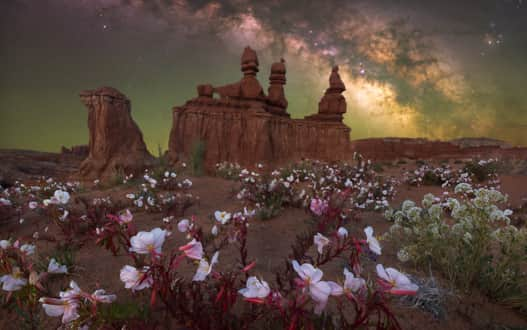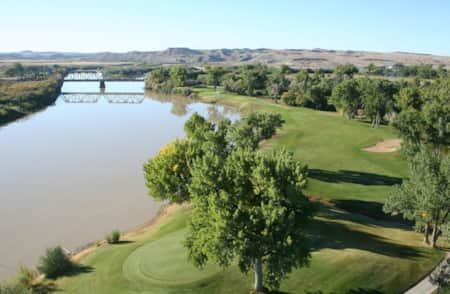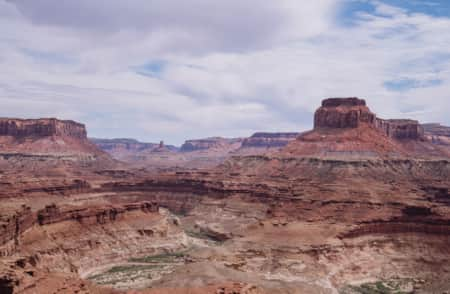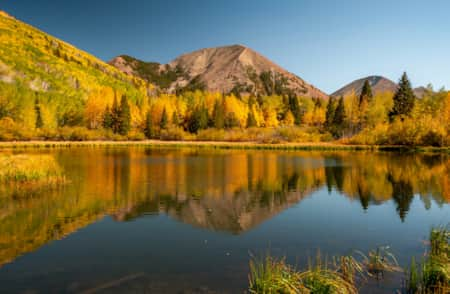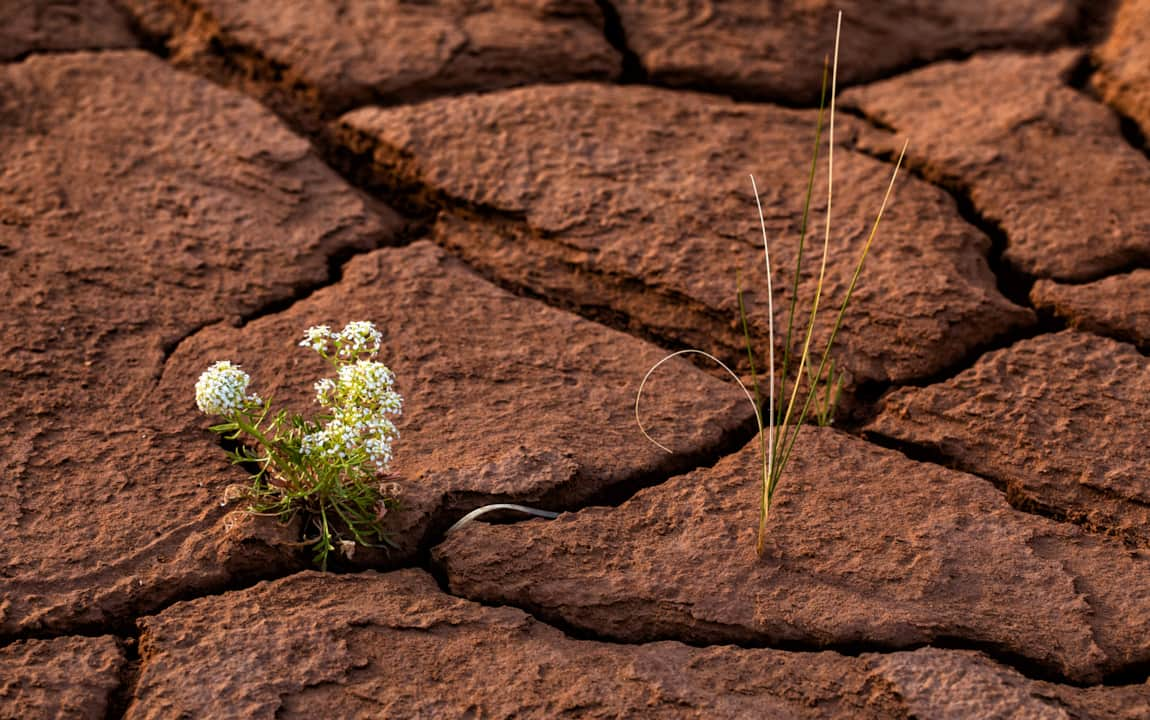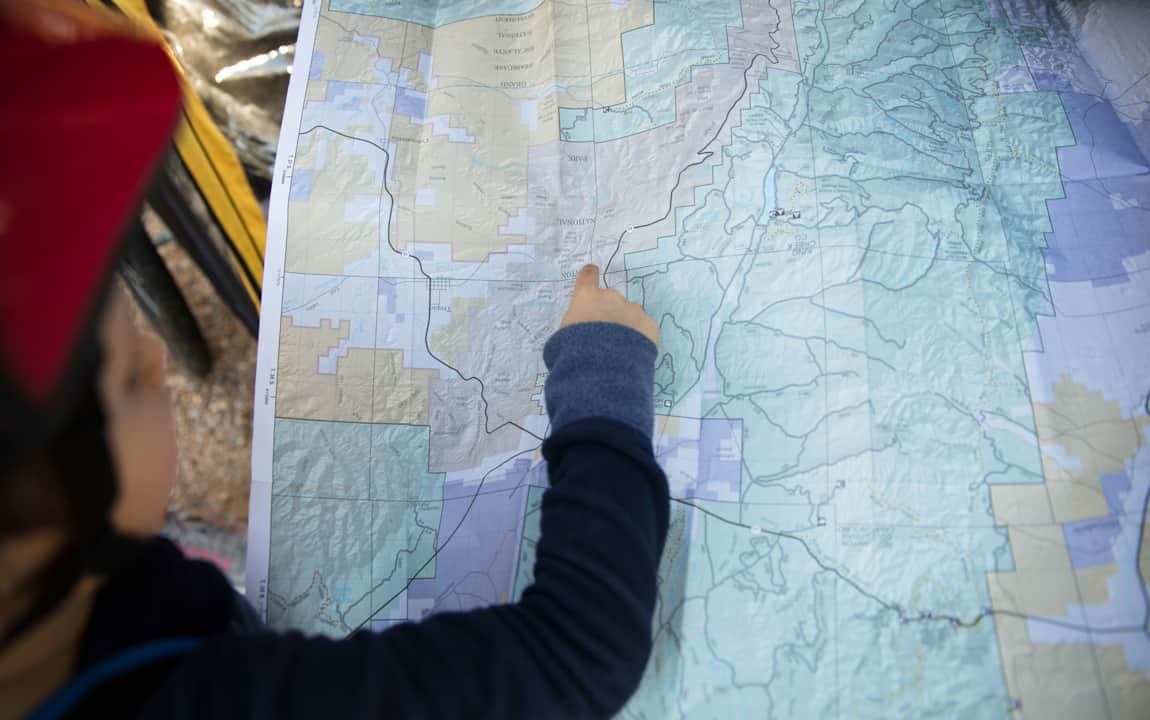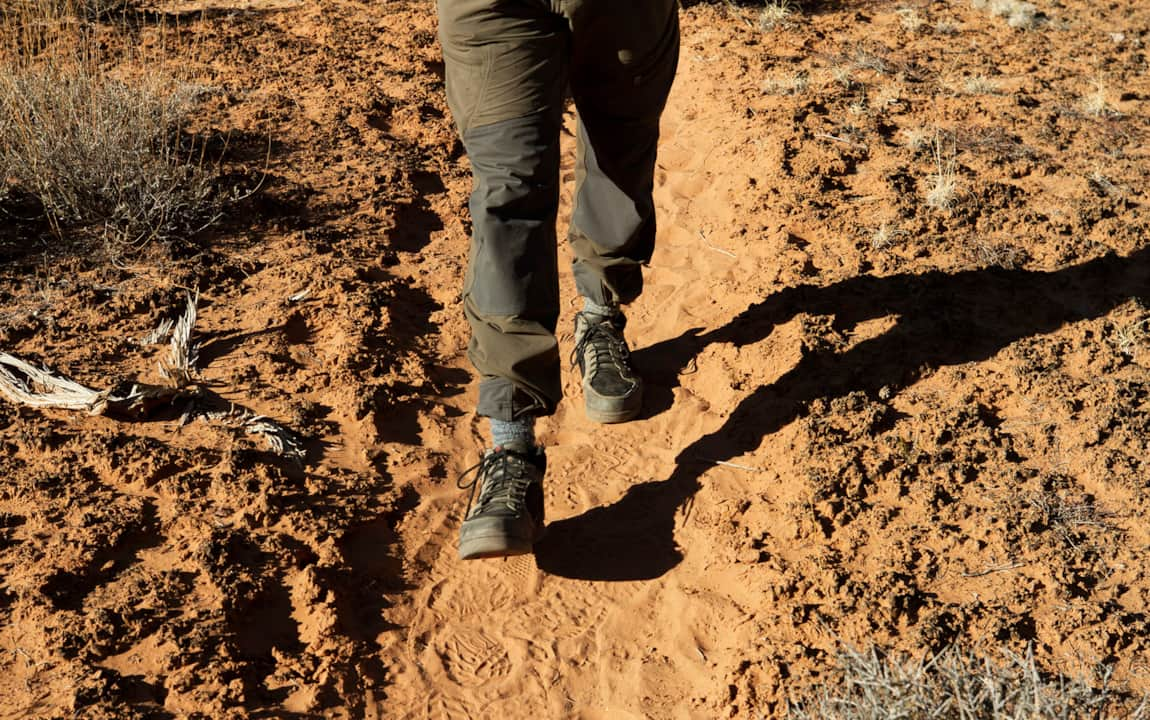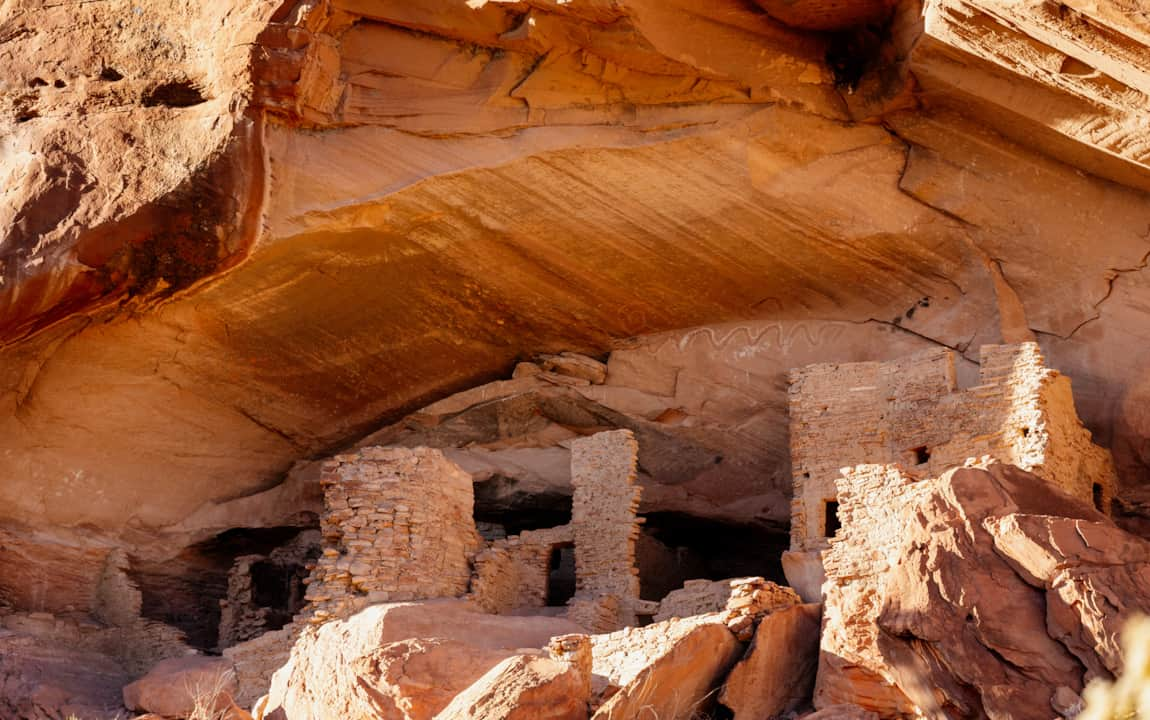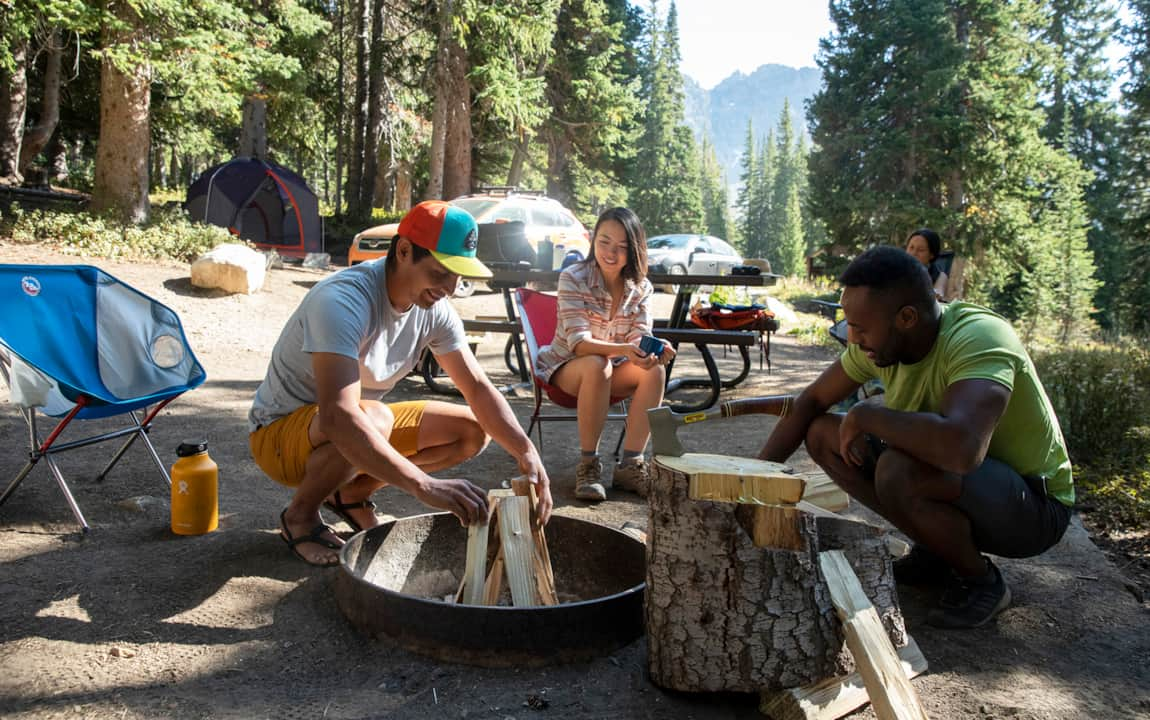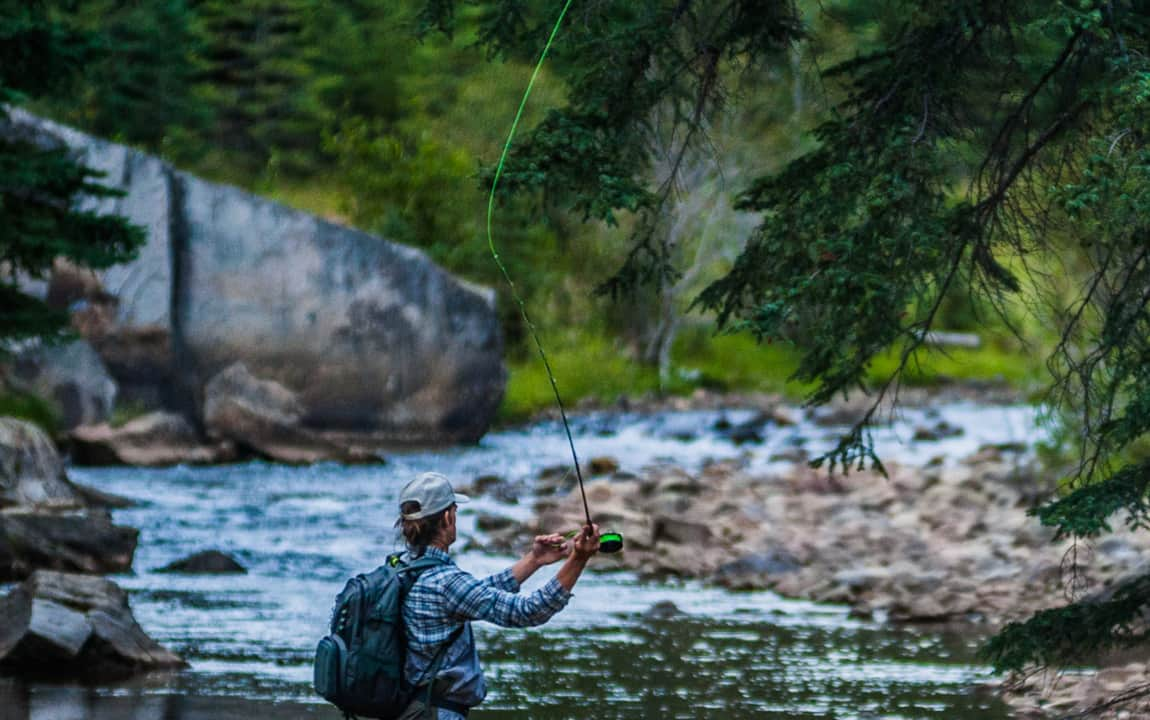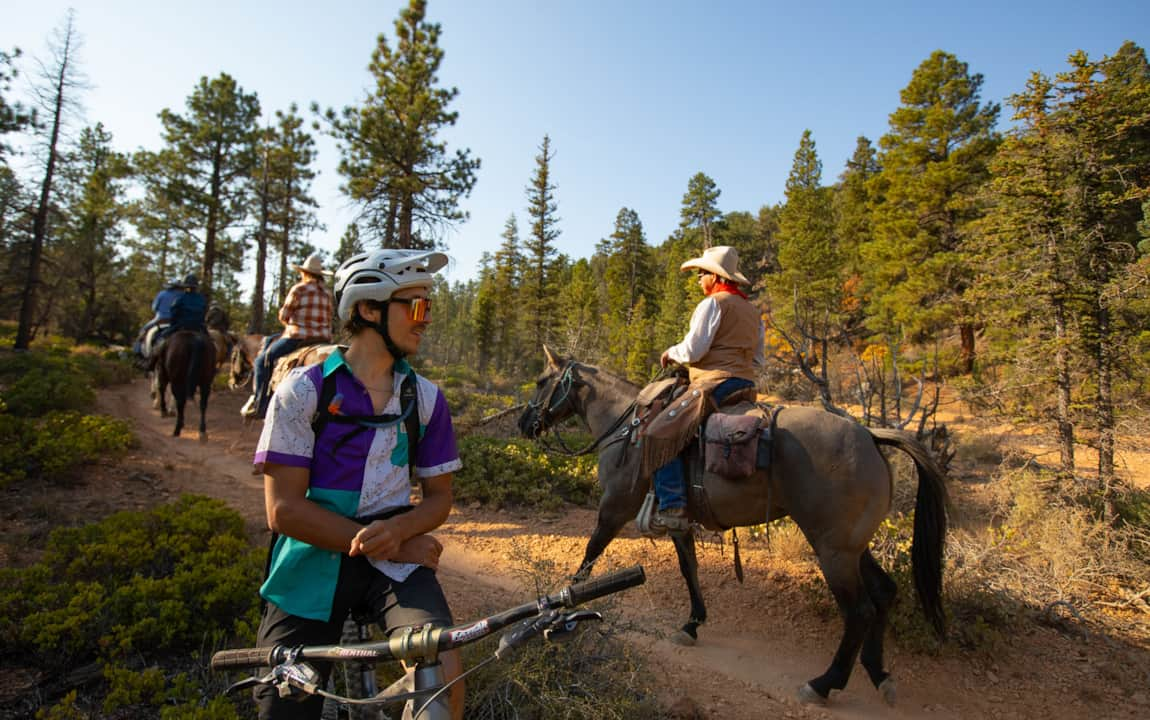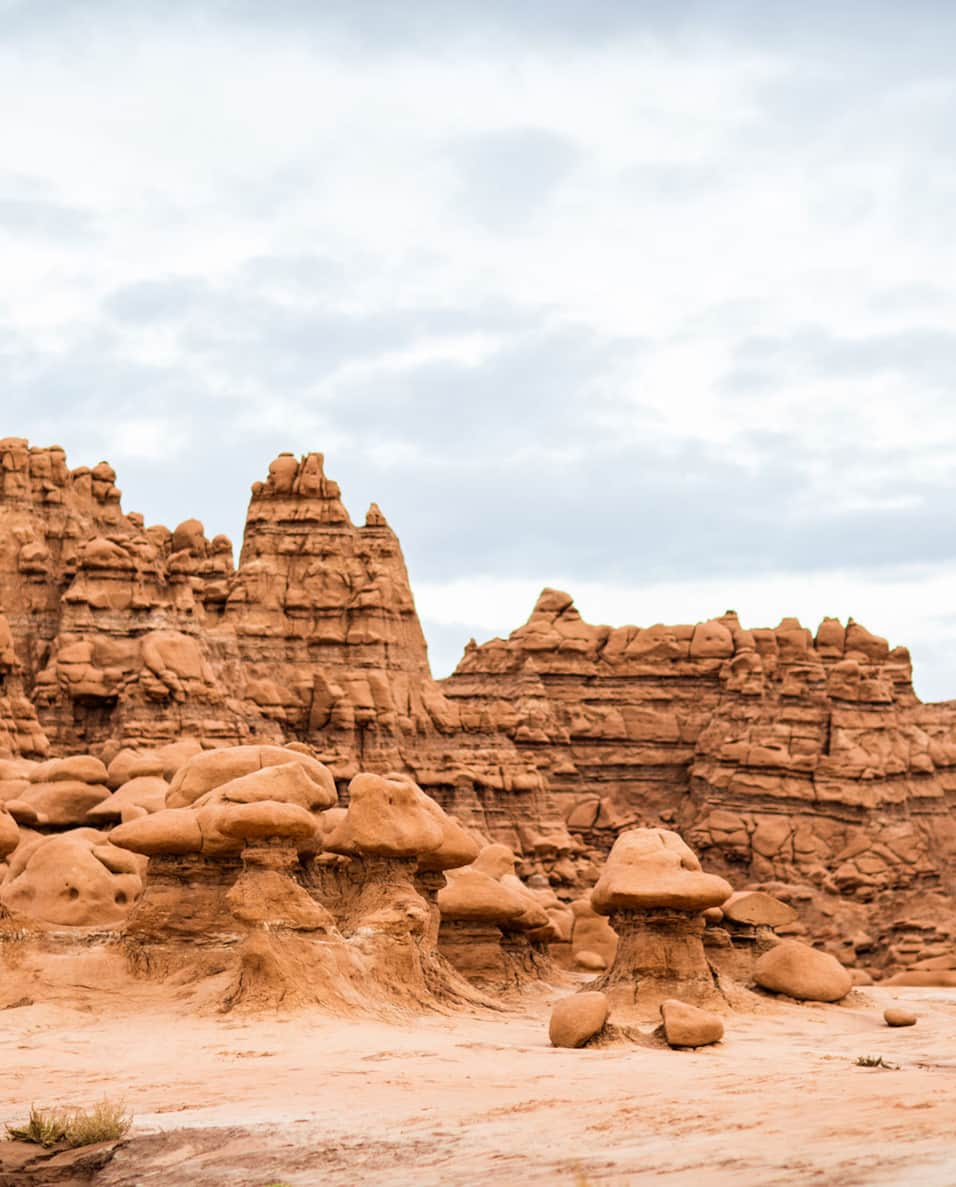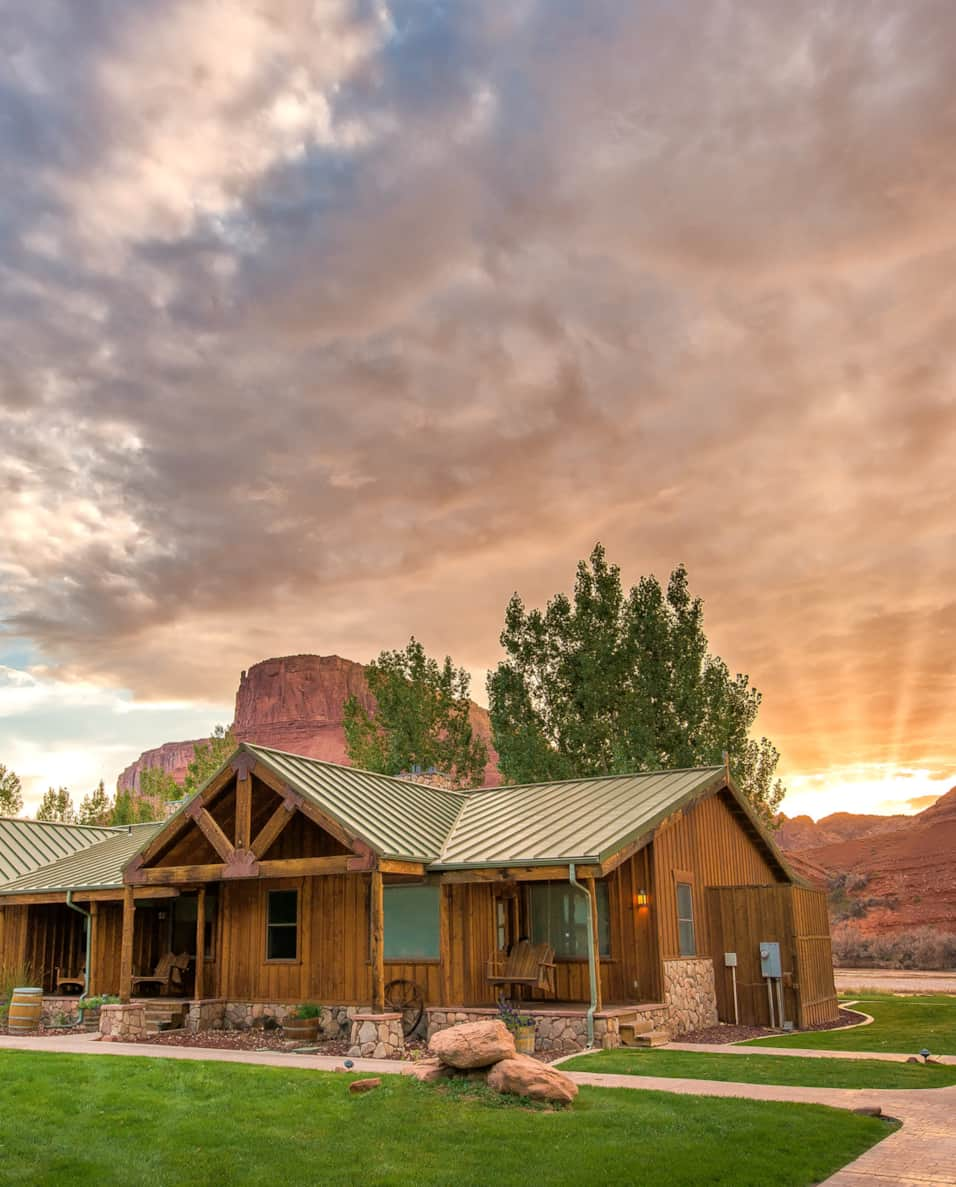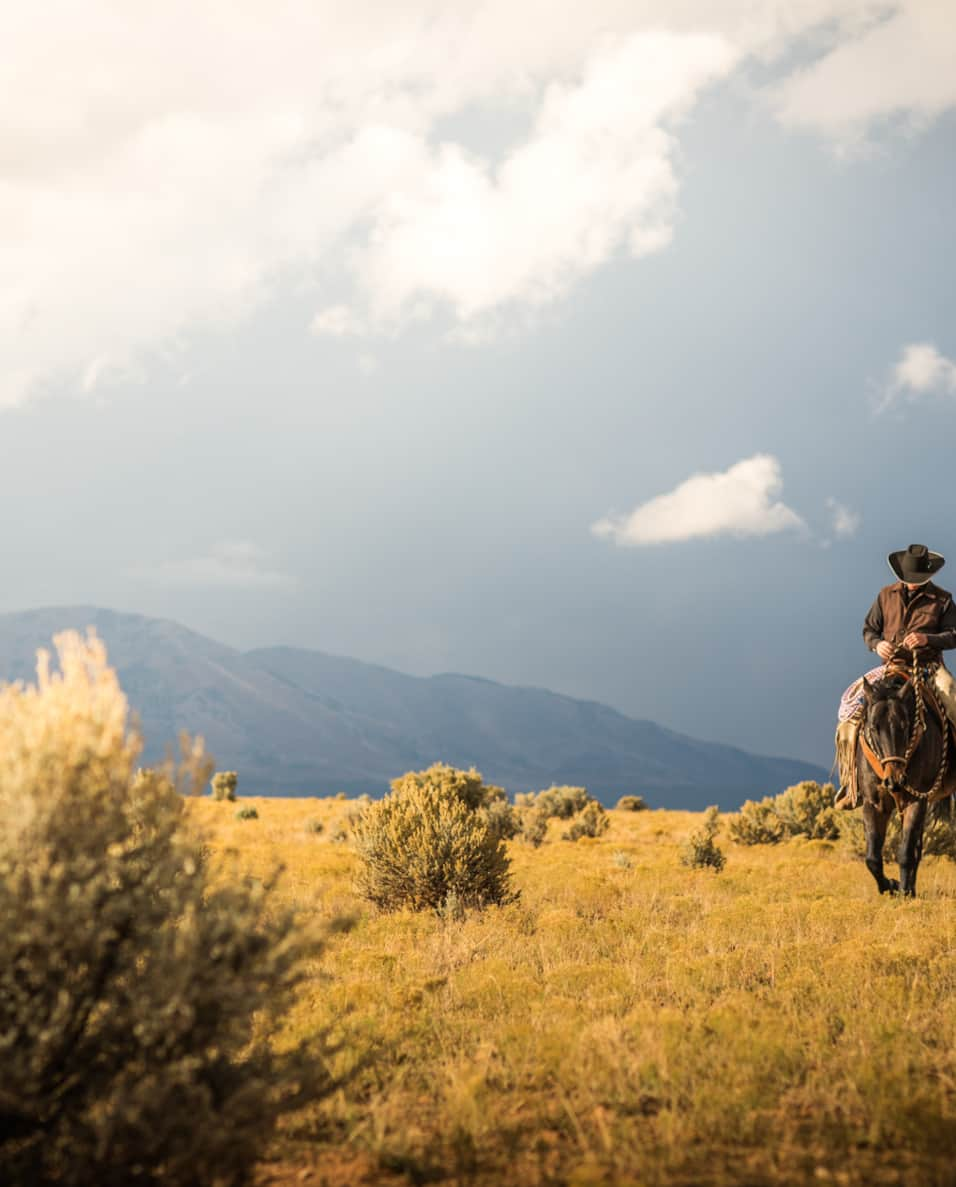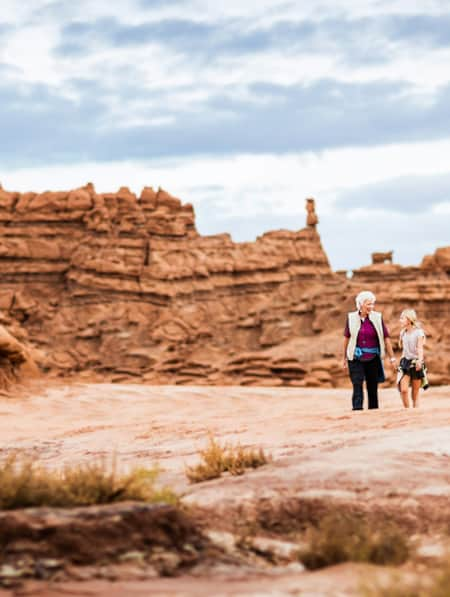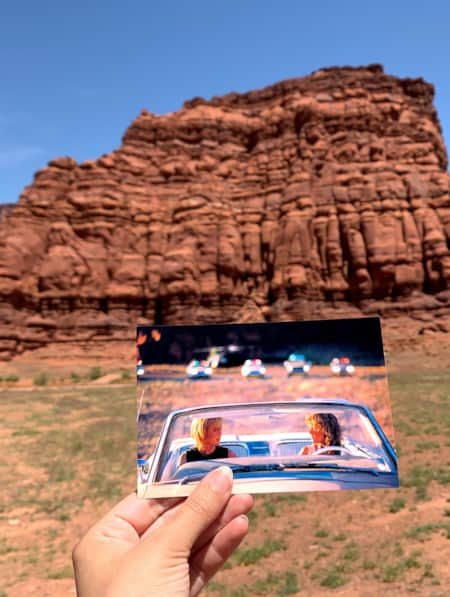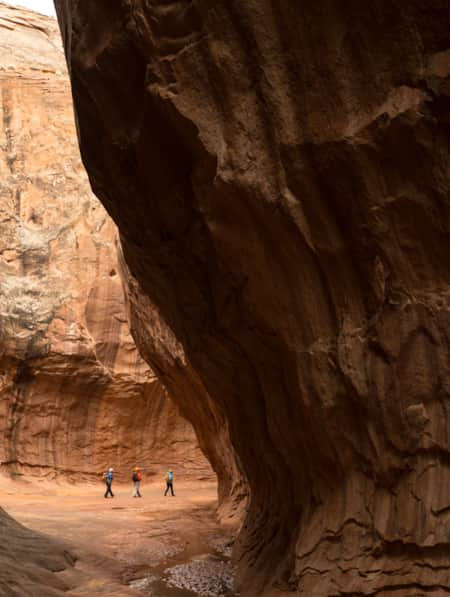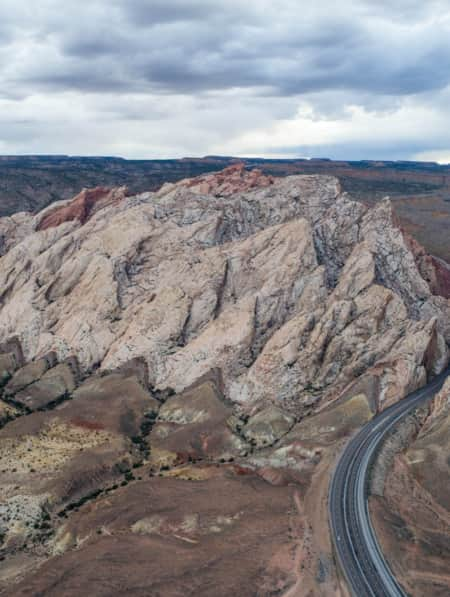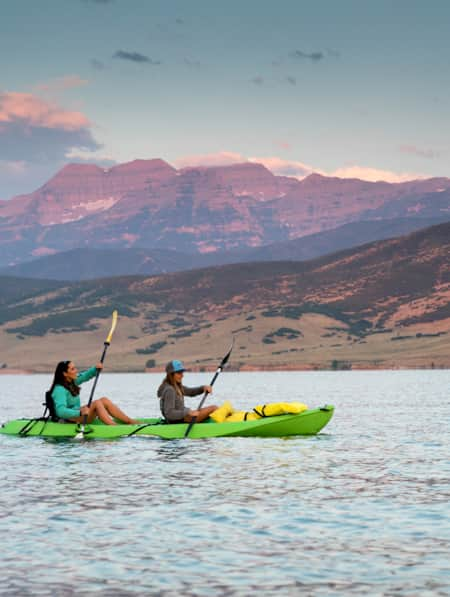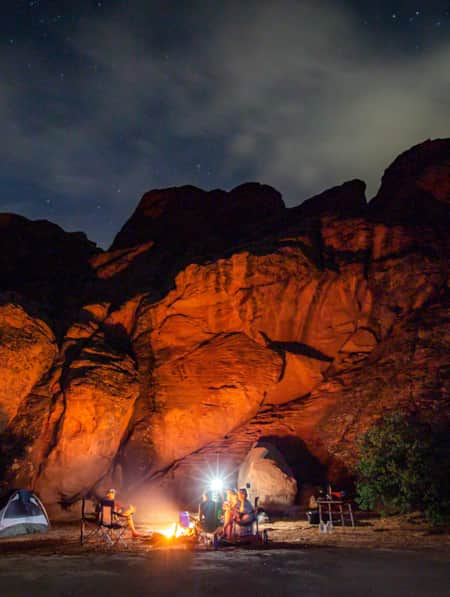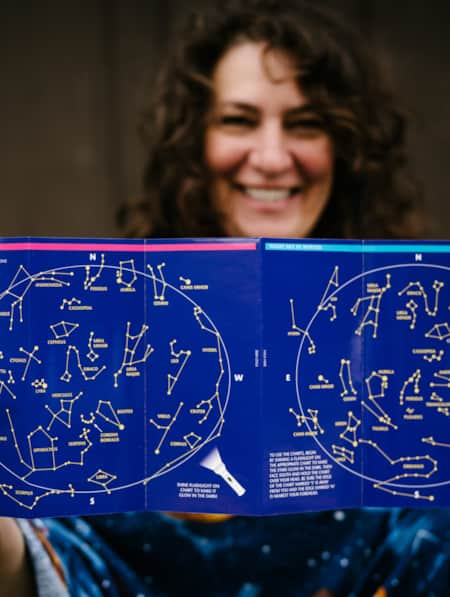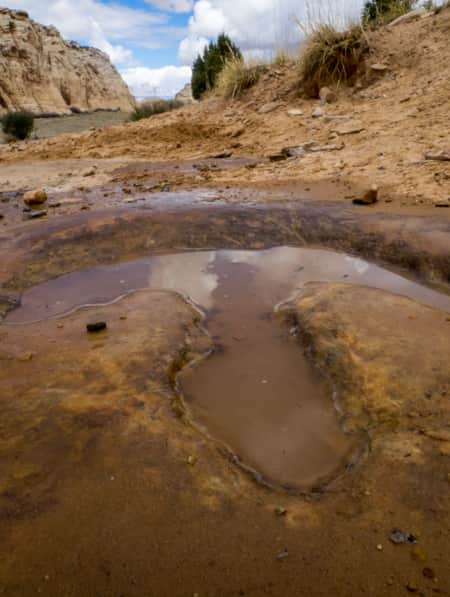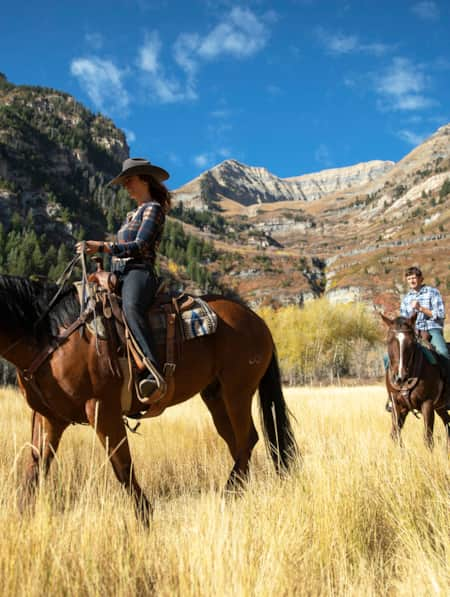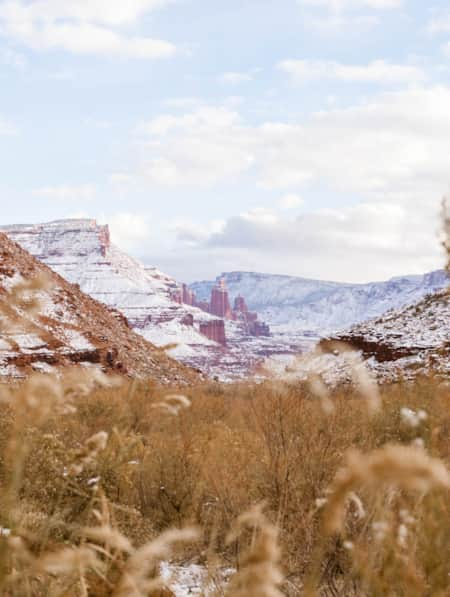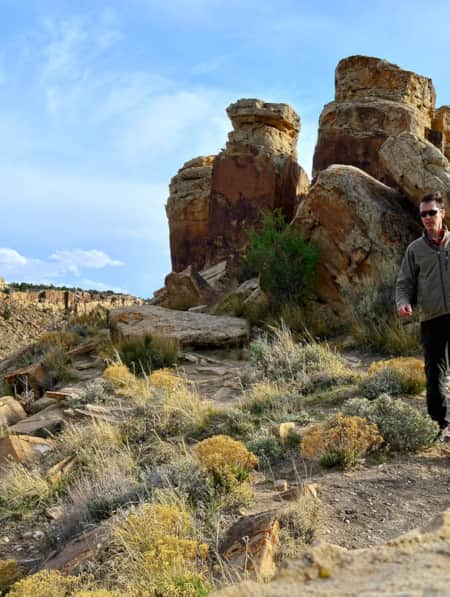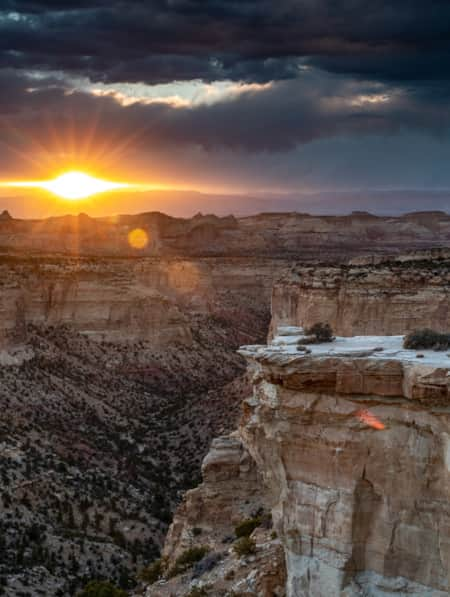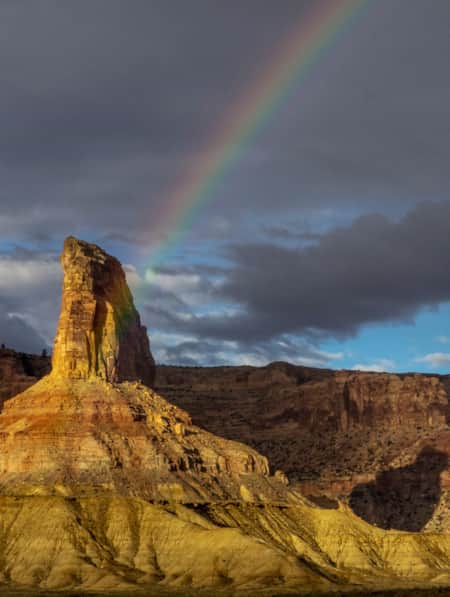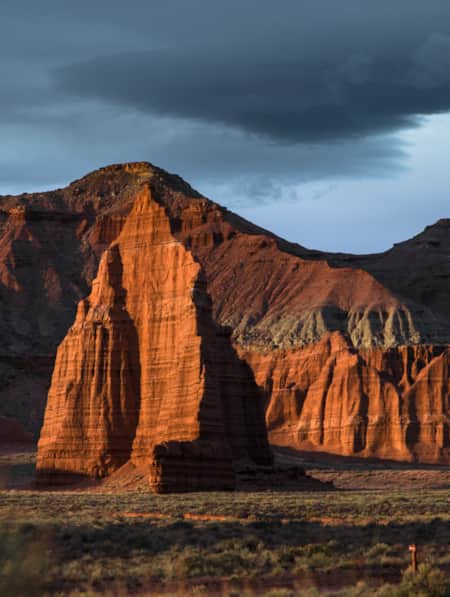Goblin Valley: Exploring the Land of Mushroom Rocks
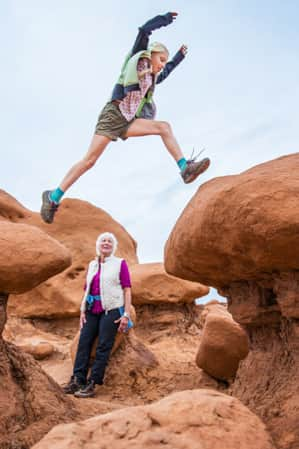
Goblin Valley State Park has become known as the place in Utah that’s “like another planet.” And that otherworldly reputation is well-deserved. This intriguing valley in the Utah desert is filled with thousands of bizarre rock formations that go on as far as you can see.
When you take your first peek at Goblin Valley from the park’s observation point, you’ll understand why early settler Arthur Chaffin named this area Mushroom Valley. A miner by trade, Chaffin first spotted the area in the 1920s while looking for a good route to build a road between Green River and Caineville. From a vantage point about a mile away, he and his two companions could see a valley full of unusual rock formations surrounded by eroded cliffs.
Native Americans and cattle ranchers had most certainly been in the area earlier, but Chaffin’s sighting of Mushroom Valley was the catalyst that eventually led to the area becoming a state park. In the years after his first visit, Chaffin never forgot the fantastic view he had seen. He tried to interest friends in going with him to explore the area, but nobody seemed interested.
Finally, in 1949 Chaffin met explorer Philip Tompkins, and it didn’t take much to convince him to go see the wonders of Mushroom Valley. They spent a week photographing the strange rock formations that had captured Chaffin’s attention some 20 years earlier. It was Tompkins who suggested the name Goblin Valley, as he thought “goblins” would stimulate more curiosity than the word mushrooms.
As the photos began to circulate, word got around about the valley of mushroom rocks, and visitors began to seek out the area. To protect the unique rocks and geology from potential vandalism, the State of Utah established Goblin Valley State Preserve in 1954, which became Goblin Valley State Park in 1964.
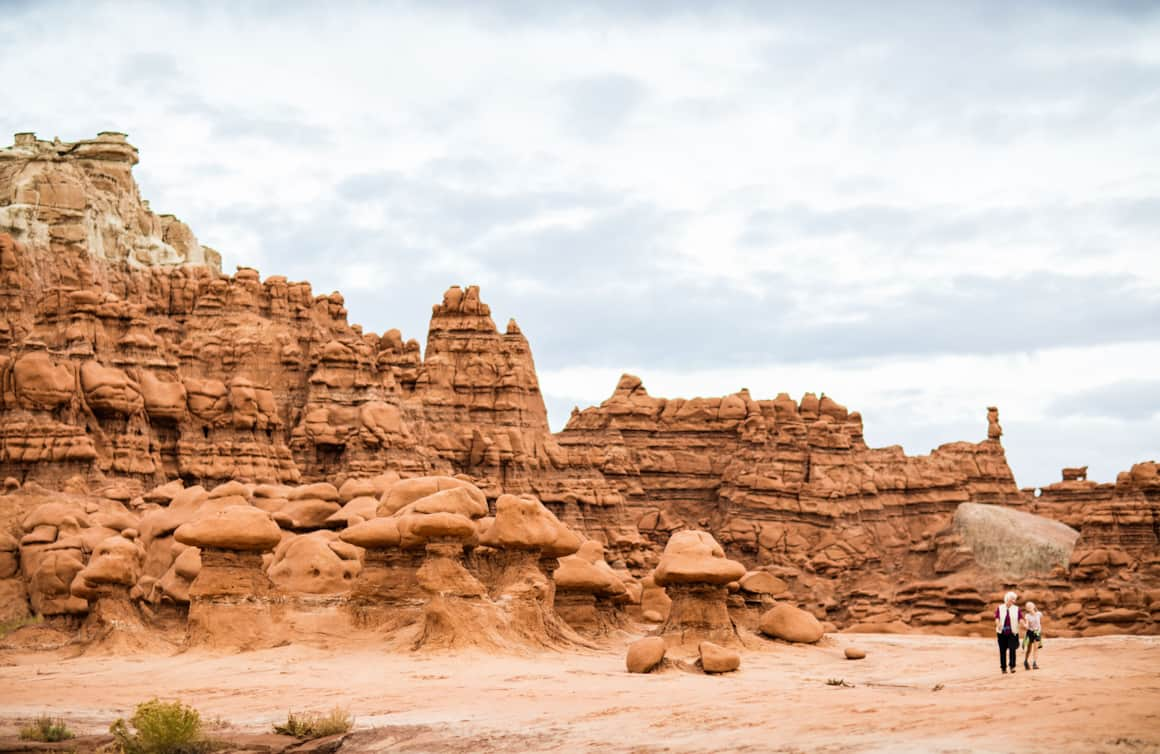
Wander among thousands of unique, eroded rock formations, each a natural work of art.
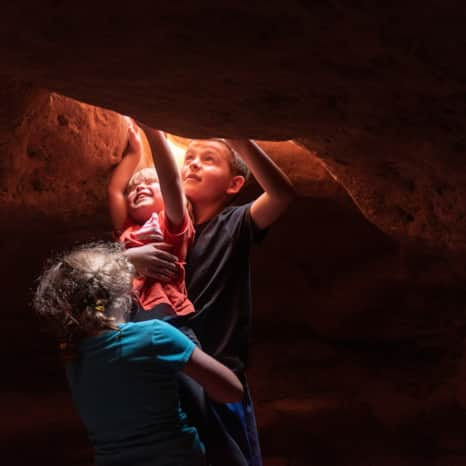
Goblin Valley's wind-carved formations create a bizarre, alien world.
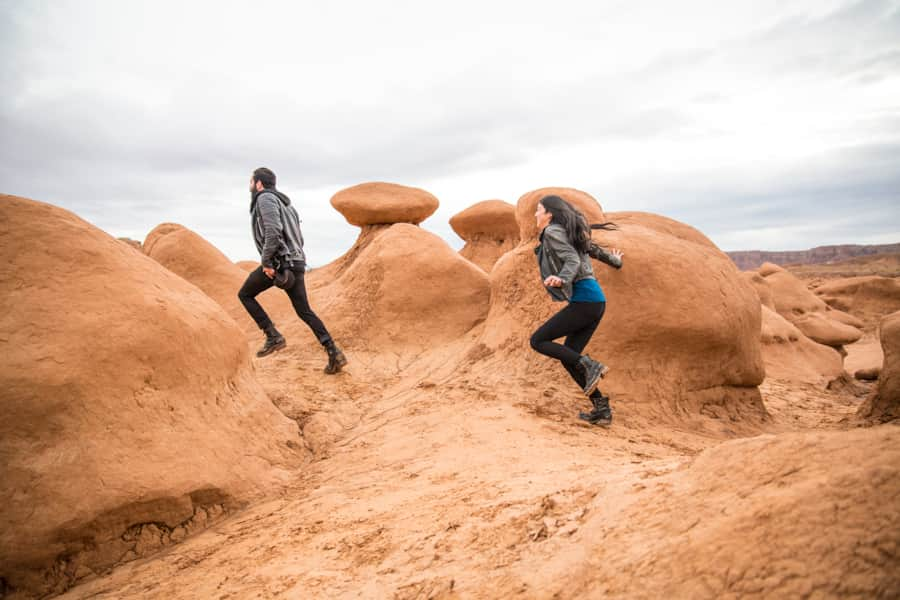
Lose yourself in a maze of mushroom-shaped hoodoos at Goblin Valley.
From Mushrooms to Mars
The formation of Goblin Valley’s unique rocks began about 170 million years ago, when the area was covered by a tidal flat, an area that’s submerged during high tide and exposed during low tide. Over millions of years, the mud and sand hardened into a rock formation called Entrada Sandstone. Wind, rain and ice gradually eroded away the softer parts of the rock, leaving behind the fascinating shapes you see at Goblin Valley today. Erosion continues, and the unique rocks will eventually collapse when their supporting pedestals wear away. In fact, many of the boulders you see lying on the ground are the remains of fallen goblins.
As you wander among the weirdly shaped rocks, it’s not hard to imagine that you’re roaming around the surface of Mars. In fact, the Mars Desert Research Station — a simulated Mars habitat where science crews practice living on Mars — is located just south of Goblin Valley.
Goblin Valley has also been discovered by Hollywood. Portions of the 1999 film “Galaxy Quest” were shot there to portray an alien planet, and in 2010 an area not far from Goblin Valley served as the Martian landscape in the film “John Carter”. The park also made an appearance in the comedy film, “City Slickers II”.
The Hite Ferry
Bringing attention to Goblin Valley wasn’t Arthur Chaffin’s only claim to fame. He was also well-known for building the Hite Ferry in 1946. The region where the Colorado River runs through Southern Utah is vast and remote, even today. But in the first half of the 20th century, much of the area wasn’t even connected by roads.
Chaffin lived in one of the most isolated places in the US: the tiny settlement of Hite. His ranch was more than 100 miles from the nearest railroad, and his closest neighbor was about 170 miles downstream on the Colorado. Chaffin was instrumental in getting an improved road built to connect Hanksville with Hite. But the Colorado River made it impossible to continue beyond Hite by car. The nearby Dandy Crossing (so named because it was a “dandy place to cross the river”) enabled explorers and cattlemen to cross the Colorado on foot or horseback. But fording the river was inconvenient for travelers and virtually impossible for automobiles, so the area’s isolation kept people away.
Chaffin wanted to make it possible for visitors to come see the scenic wonders of San Juan County. So, he decided to build a ferry that could move vehicles across the river. The ferry was powered by the engine of a Model A Ford, and a steel cable kept the wooden platform on course. The fare was $5 per vehicle, which was a significant sum of money back then.
For nearly 20 years, the Hite Ferry made it possible to travel by vehicle between Hanksville and Blanding. By 1963, however, Lake Powell began to fill as part of the Glen Canyon Dam project. On June 5, 1964, the ferry made its last official run. The waters of the reservoir eventually inundated the settlement of Hite, marking the end of an era in Glen Canyon and ushering in a new age of vehicle tourism in the Glen Canyon region. A new steel arch bridge opened in 1966 and now carries travelers over the Colorado River as part of Utah State Route 95.
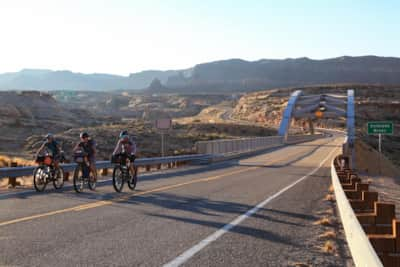
Goblin Valley Yurts
Lots of parks have yurts these days, but you won’t find many with the dramatic setting that Goblin Valley offers. The park’s two yurts (circular structures built on a wooden deck) tend to book up months in advance by visitors anxious to spend the night on “Mars.” The yurts offer bunk beds, a dining table and chairs, electricity and a propane heating stove. You’ll need to bring your own linens or sleeping bags for the beds.
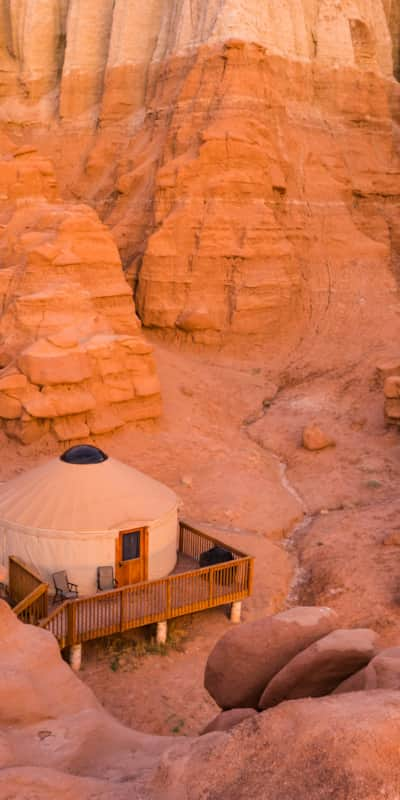
Visiting Goblin Valley
Goblin Valley is a must-do stop if you’re traveling with children. Most kids will gladly give up their video games to spend a day scrambling and climbing through the hoodoos here. In fact, you may have to drag them out kicking and screaming when it’s time to leave. Because the observation point is high on a cliff that’s visible from the valley floor, it’s hard for kids to get lost.
Directions from I-70: Take Exit 147 and head south on Utah Highway 24 for 24 miles. Turn right at the signed turnoff to Goblin Valley State Park (Temple Mountain Junction) and continue 12 miles to the park. From the entrance and fee station, it’s a little over a mile to the observation point (Goblin Overlook).
If you continue south from Hanksville for 48 miles, you’ll cross the modern version of the Hite Crossing Bridge. The scenic arch bridge is the only automobile crossing of the Colorado River for nearly 300 miles, between Moab (110 miles upstream) and the Glen Canyon Dam Bridge (185 miles downstream). A stop at the Hite Overlook View Area will give you a distant view of the bridge and a panorama of the area’s remote landscape.
What's Nearby
-

Green River
The city of Green River was once a stomping ground for Butch Cassidy and his Wild Bunch, and is a haven for river runners who raft places such as Desolation and Gray Canyons.
-

San Rafael Swell
San Rafael hikes and bike rides offer unique terrain and jaw-dropping scenery. Learn about the area’s trails and start planning your trip!
-

Manti-La Sal National Forest
The Manti-La Sal National Forest consists of three blocks located in central, eastern and southeastern Utah. The area has an abundance of lakes and is great for fishing, hiking and more.
